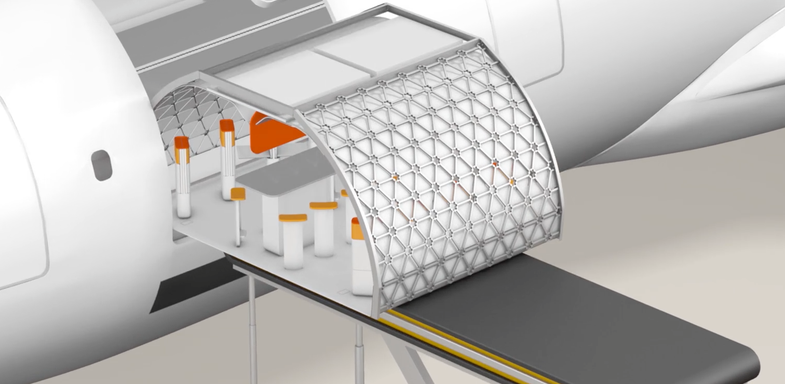New Airbus concept makes airliner interiors quickly customizable
A window to a windowless future.

An airliner is a special metal tube, often filled with as many passengers as possible, all in the service of extracting profit from the need for urgent, efficient transport. Anyone traveling by air this week likely experience one logical end of this: crammed into a narrow seat, likely between two strangers, nibbling peanuts and waiting to return to the ground. This shape is dictated by tradition and business necessity, but what if it didn’t have to be? What if an airline could be customized at the time of the flight, with a social bar for business travelers returning home or sleeping quarters for long-haul travelers catching a red eye?
Airbus, an aviation giant with decades of experience in airliners, wants to reconsider how the insides of airliners might work. Enter “Transpose,” a vision for a passenger aircraft that can swap segments at will, adapting to the next flight needed.
Astute observers will see that there are no windows in that section of seating. That’s because the modular concept, while novel for airliners, is already in use on freight aircraft.
“Modular aircraft cabins already exist…in the form of freighter variants of large commercial aircraft.” says Jason Chua, a project executive at Airbus’ Silicon Valley outpost.
“This is our starting point: iterating on this already modular, but spartan platform, we’re able to redesign passenger support systems from the ground up to be more flexible, enabling them to be connected and disconnected easily from aircraft. Additionally, we’re taking an ecosystem approach to this challenge, drawing upon expertise and leveraging best practices from multiple industries. With this strategy — starting with a flying plane, and working with a set of best-in-their-field partners — Transpose is both achievable and pragmatic.”
As envisioned, that means passengers lose out on windows, but could get a customized cabin to match the flight. Who needs to look down at the world thousands of feet below when you can instead stare into the bottom of a whiskey glass while sitting on an awkward barstool next to fellow strangers?
All of this innovation means little if there’s no business incentive to do it. “Many experiences can be provided with little to no increase in the amount passengers currently pay for comparable experiences on the ground” says Chua, framing a flight ticket with bar access as just an elaborate cover charge at a bar.
Besides passengers, Airbus sees a business opportunity for companies that want to make modules, and for ones that want to offer hospitality services within specialty modules for flights. However it turns out, it’s a world above some other Airbus ideas, like stacking passengers on top of each other.
